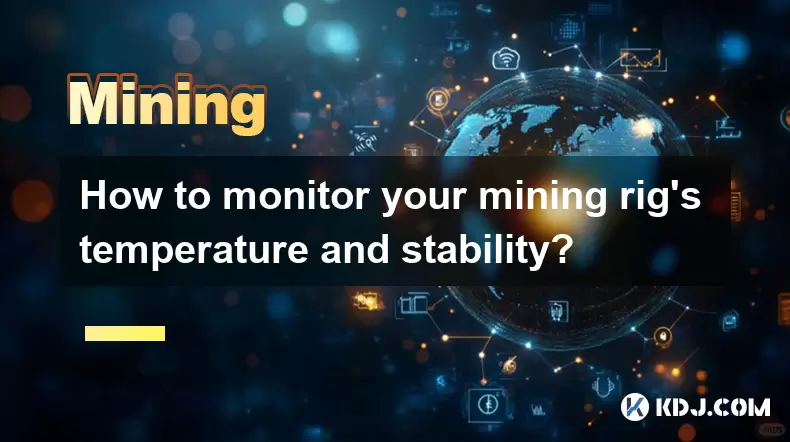-
 Bitcoin
Bitcoin $116400
-0.36% -
 Ethereum
Ethereum $4033
3.40% -
 XRP
XRP $3.302
-1.26% -
 Tether USDt
Tether USDt $1.000
-0.02% -
 BNB
BNB $796.1
1.67% -
 Solana
Solana $177.8
1.89% -
 USDC
USDC $0.9999
0.00% -
 Dogecoin
Dogecoin $0.2314
4.09% -
 TRON
TRON $0.3381
0.14% -
 Cardano
Cardano $0.7989
1.22% -
 Stellar
Stellar $0.4496
-1.84% -
 Chainlink
Chainlink $20.42
9.42% -
 Hyperliquid
Hyperliquid $41.17
0.88% -
 Sui
Sui $3.914
3.77% -
 Bitcoin Cash
Bitcoin Cash $584.7
1.52% -
 Hedera
Hedera $0.2632
-0.54% -
 Avalanche
Avalanche $24.09
3.40% -
 Ethena USDe
Ethena USDe $1.001
-0.02% -
 Litecoin
Litecoin $123.2
1.33% -
 Toncoin
Toncoin $3.318
-0.04% -
 UNUS SED LEO
UNUS SED LEO $8.984
-0.05% -
 Shiba Inu
Shiba Inu $0.00001323
2.85% -
 Uniswap
Uniswap $10.90
4.41% -
 Polkadot
Polkadot $3.999
3.34% -
 Dai
Dai $1.000
0.01% -
 Cronos
Cronos $0.1630
9.64% -
 Bitget Token
Bitget Token $4.484
0.82% -
 Monero
Monero $272.4
2.44% -
 Pepe
Pepe $0.00001173
6.03% -
 Aave
Aave $290.8
2.88%
How to trade second-hand mining machines for Bitcoin mining?
When purchasing a second-hand mining machine, it's imperative to understand the market, find reliable suppliers, and carefully assess machine capabilities to ensure optimal performance and profitability.
Feb 25, 2025 at 05:25 am

Key Points:
- Understanding the Market: Researching the dynamics of the second-hand mining machine market.
- Finding Reliable Suppliers: Identifying reputable sources for purchasing high-quality used mining machines.
- Assessing Machine Capabilities: Evaluating the specifications and performance of potential mining machines.
- Secure Payment and Delivery: Safeguarding transactions and ensuring the secure delivery of the mining machine.
- Installation and Configuration: Setting up the mining machine correctly for optimal performance.
- Troubleshooting and Maintenance: Identifying potential issues and maintaining the mining machine's efficiency.
- Managing Energy Consumption: Optimizing power usage for cost-effective mining operations.
- Monitoring and Control: Overseeing the mining machine's performance and making adjustments as needed.
- Calculating Profitability: Determining the financial viability of the mining operation based on market conditions.
Step-by-Step Guide:
1. Understanding the Market:
Thoroughly research the global second-hand mining machine market to grasp market trends, pricing dynamics, and regional availability. Attend industry events, consult research reports, and network with miners to gain insights into the market landscape.
2. Finding Reliable Suppliers:
Identify established and reputable suppliers who have a proven track record in the industry. Check online reviews, consult industry forums, and verify the company's registration and licensing. Look for suppliers who offer warranties and provide technical support.
3. Assessing Machine Capabilities:
Understand the specifications of potential mining machines, such as hash rate, power consumption, and cooling efficiency. Consider the miner type (e.g., ASIC, GPU), compatibility with mining software, and availability of aftermarket upgrades. Compare performance benchmarks to determine the most suitable machines for your needs.
4. Secure Payment and Delivery:
Choose secure payment methods, such as escrow services or trusted online platforms, to safeguard transactions. Verify the delivery address and track the shipment progress using reputable couriers. Unpack the machine carefully and inspect it for any visible damage.
5. Installation and Configuration:
Follow the manufacturer's instructions for proper installation and configuration of the mining machine. Ensure stable power supply and adequate ventilation for optimal performance. Connect the machine to a stable internet connection and configure mining software.
6. Troubleshooting and Maintenance:
Monitor the mining machine's performance and identify potential issues based on indicators such as temperature, hash rate, and error codes. Perform regular maintenance, including cleaning fans, replacing thermal paste, and updating firmware. Consider using remote monitoring tools for proactive troubleshooting.
7. Managing Energy Consumption:
Optimize power consumption by selecting energy-efficient mining machines, using efficient cooling systems, and monitoring power usage. Explore renewable energy sources, such as solar or wind power, to reduce electricity expenses.
8. Monitoring and Control:
Continuously monitor the mining machine's performance and adjust settings as needed to maximize profitability. Use mining software that provides detailed statistics, alerts, and remote control capabilities. Monitor market conditions and adjust mining strategies accordingly.
9. Calculating Profitability:
Estimate the potential profitability of your mining operation based on market factors such as Bitcoin price, mining difficulty, and electricity costs. Consider hardware depreciation, maintenance expenses, and any additional costs associated with the operation.
FAQs:
Q: What factors should I consider when choosing a second-hand mining machine?
A: Hash rate, power consumption, cooling efficiency, compatibility with mining software, and availability of aftermarket upgrades.
Q: How can I ensure the reliability of a second-hand mining machine supplier?
A: Check online reviews, consult industry forums, and verify the company's registration and licensing. Look for suppliers who offer warranties and provide technical support.
Q: What are the potential risks involved in purchasing a second-hand mining machine?
A: Hidden damage, performance issues, fraud, or theft. Carefully inspect the machine before purchasing, use reputable suppliers, and consider a warranty.
Q: How can I optimize the performance of my second-hand mining machine?
A: Proper installation and configuration, regular maintenance, and optimizing power consumption. Use remote monitoring tools to troubleshoot and adjust settings for optimal performance.
Q: How can I calculate the potential profitability of my mining operation?
A: Estimate revenue based on Bitcoin price and hash rate, and consider expenses including electricity costs, hardware depreciation, and maintenance. Factor in market conditions and adjust strategies accordingly.
Disclaimer:info@kdj.com
The information provided is not trading advice. kdj.com does not assume any responsibility for any investments made based on the information provided in this article. Cryptocurrencies are highly volatile and it is highly recommended that you invest with caution after thorough research!
If you believe that the content used on this website infringes your copyright, please contact us immediately (info@kdj.com) and we will delete it promptly.
- Decentralized Data: Taking the Driver's Seat in the Data Economy
- 2025-08-09 14:30:11
- Bitcoin vs. Gold: The Store-of-Value Showdown in the Digital Age
- 2025-08-09 14:30:11
- BlockDAG, Stellar, and Crypto Adoption: Navigating the Hype
- 2025-08-09 14:50:12
- Litecoin Price Surge: Riding the Wave of Institutional Interest and ETF Hopes
- 2025-08-09 14:50:12
- Chainlink's Wild Ride: Whales Are Still Loading Up on LINK!
- 2025-08-09 15:10:11
- Ruvi AI: Solana's New Challenger Dominating Token Sales with AI Innovation
- 2025-08-09 14:55:15
Related knowledge

What is "proof-of-work" and how does it relate to mining?
Aug 07,2025 at 02:03pm
Understanding the Concept of Proof-of-WorkProof-of-work (PoW) is a consensus mechanism used in blockchain networks to validate transactions and secure...

What are the differences between mining on Windows vs. Linux?
Aug 06,2025 at 11:29pm
Overview of Cryptocurrency Mining PlatformsCryptocurrency mining involves using computational power to solve complex cryptographic puzzles and validat...

How to use an old computer for cryptocurrency mining?
Aug 07,2025 at 12:42pm
Understanding the Feasibility of Using an Old Computer for MiningUsing an old computer for cryptocurrency mining may seem outdated, but it is still te...

Can you mine cryptocurrency using solar power?
Aug 07,2025 at 12:00am
Understanding the Basics of Cryptocurrency MiningCryptocurrency mining involves validating transactions on a blockchain network by solving complex cry...

How to monitor your mining rig's temperature and stability?
Aug 09,2025 at 09:43am
Understanding the Importance of Temperature Monitoring in Mining RigsMaintaining optimal temperature levels in a mining rig is essential for long-term...

How to build a mining rig inside a PC case?
Aug 06,2025 at 11:01pm
Understanding the Basics of a Mining Rig in a PC CaseBuilding a mining rig inside a PC case involves transforming a standard computer chassis into a d...

What is "proof-of-work" and how does it relate to mining?
Aug 07,2025 at 02:03pm
Understanding the Concept of Proof-of-WorkProof-of-work (PoW) is a consensus mechanism used in blockchain networks to validate transactions and secure...

What are the differences between mining on Windows vs. Linux?
Aug 06,2025 at 11:29pm
Overview of Cryptocurrency Mining PlatformsCryptocurrency mining involves using computational power to solve complex cryptographic puzzles and validat...

How to use an old computer for cryptocurrency mining?
Aug 07,2025 at 12:42pm
Understanding the Feasibility of Using an Old Computer for MiningUsing an old computer for cryptocurrency mining may seem outdated, but it is still te...

Can you mine cryptocurrency using solar power?
Aug 07,2025 at 12:00am
Understanding the Basics of Cryptocurrency MiningCryptocurrency mining involves validating transactions on a blockchain network by solving complex cry...

How to monitor your mining rig's temperature and stability?
Aug 09,2025 at 09:43am
Understanding the Importance of Temperature Monitoring in Mining RigsMaintaining optimal temperature levels in a mining rig is essential for long-term...

How to build a mining rig inside a PC case?
Aug 06,2025 at 11:01pm
Understanding the Basics of a Mining Rig in a PC CaseBuilding a mining rig inside a PC case involves transforming a standard computer chassis into a d...
See all articles

























































































